The Top 10 Albums of 1979
Because album lists shouldn't happen only once a year. In this installment, times were good: Every album came with a poster, disco was dying, and actors weren't Presidents.
There were a lot of big albums in 1979. Big, as in lengthy. It was the end of the decade of the concept album, and this year had what must still be the biggest of them all: Pink Floyd’s bloater, The Wall. Packaged with a poster, gatefold artwork, and much disturbing imagery, it terrified me at the time, and my mom got angry at my brother for even showing it to me. I can still hardly look at the album without cringing.
On the other hand, and scary in its own right, my favorite record at the time was Dynasty by Kiss. But that’s all changed by now.
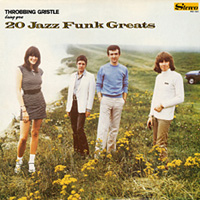
10. Throbbing Gristle, 20 Jazz Funk Greats
In Annie Hall, Woody Allen supposes the rest of the country views New Yorkers as “left-wing, communist, Jewish, homosexual pornographers.” Which is how a lot of people might look at Throbbing Gristle—with some suspicion, and with the sense that, somewhere in the background, they can hear people screwing. Like New York, your phobia of Throbbing Gristle eventually wears away, then you revel in it, you advertise it, grow up a little with it, and eventually move on. But you never forget it.
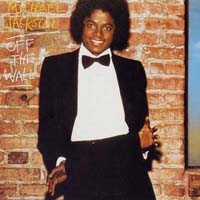
9. Michael Jackson, Off the Wall
Michael Jackson’s lyrics, I think we can all agree, are not that great, and his songs don’t make any pretension about this; they’re more concerned with the vocal quality than with the lyric content. Since Off the Wall was the album that touched off his mega-stardom, it was the last opportunity a producer (in this case, Quincy Jones) would have to push those vocals down in the mix. The effect is that you can actually hear the music, such as the genius bass playing of Louis Johnson, who “co-wrote” one of the best songs of Michael Jackson’s solo career, “Get on the Floor.” Listen to it a hundred times and you’ll still swear it’s an instrumental.
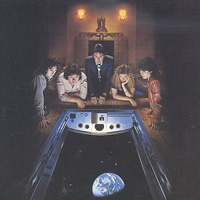
8. Paul McCartney & Wings, Back to the Egg
The cover of Back to the Egg, shot in Paul’s personal spacecraft, depicts McCartney and crew gazing down upon planet Earth. The band is reflecting on the threat the decade’s punk music posed to their rock-icon leader’s relevance; you can even see them imagining the new musical adventure of the next Wings album. What they don’t know is that in just a few weeks McCartney will fire everyone and block out his afternoons for quality time with Michael Jackson. Also, they’re bombed out of their skulls.
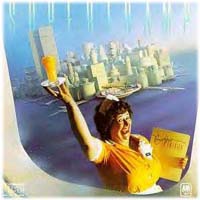
7. Supertramp, Breakfast in America
On the subject of album artwork, Supertramp had some excellent covers, even if the records inside weren’t always so flawless. Still, when one of your vocalists is married to an executive at your record label, perhaps you get special treatment—as well as a graphic arts team billing 40 hours a week to the Supertramp project. The artwork, however, is still very impressive: Crime of the Century, Even in the Quietest Moments, Breakfast in America, Famous Last Words.
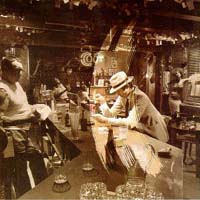
6. Led Zeppelin, In Through the Out Door
This album is so very different from the rest of the Led Zeppelin catalog: The playing is unfathomably tighter, the instrumentation more varied, the songs’ content more mature (“All My Love” concerns the death of Robert Plant’s son). But they were older, presumably wiser—it had been 10 years since the band formed, 10 years of legendary hedonism. Though the album also feels remarkably somber; the following year drummer John Bonham will die and one of rock’s greatest bands will dissolve. The album is poignant, until you point out that its title may refer to anal sex. Thank you, heshers, for pointing that out.
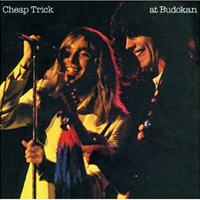
5. Cheap Trick, At Budokan
What the world needs now are more Cheap Tricks. With music sales in the toilet—and no sign of change imminent—the future of the industry has to be somewhere, and where it should be is live, in concert. Nothing yet can replicate the experience of seeing a show in person, and live albums rarely do it justice. However, with this album, recorded in concern in Japan, Cheap Trick made its mark as a live band, albeit a live, recorded band. It’s easy to see why. Like the live experience, there’s an electric connection the band makes with the audience, and you can hear it in Robin Zander’s introduction of the band’s imminent hit single, when he enunciates: “I want you… to want me.” That’s the connection that live music creates—and makes it happen in one succinct phrase.
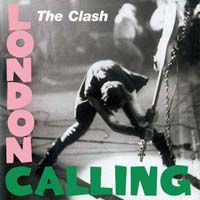
4. The Clash, London Calling
An achievement in musical storytelling, London Calling is rich with tales of guys getting shot, guys getting drunk, and, of course, guys named Montgomery Clift. In comparison to the band’s other work, especially everything that came after this album, it’s the narrative that’s missing. Of course the music was still good, but the meaning was taken away, and the Clash was an original force because of that meaning. Or perhaps I’m reading too much into that “Rock the Casbah” cell phone commercial.

3. Fleetwood Mac, Tusk
Ever since this album, the follow-up to the band’s multi-platinum Rumours, was released, contract-wielding record executives have shuddered at the term “full creative control.” And who could blame them? Rumours was chock full o’ hits, and so popular that, following its release, eager fans would have purchased a box of Fleetwood Mac dog turds—many claimed that’s just what they got with Tusk. This album is no hit machine; it barely even has songs. Rather, each track is a singular idea taken to its ultimate point, with subtle tangents taken along the way. The result is a collection of discrete musical explorations, and about as far as you can get from a straightforward pop album.
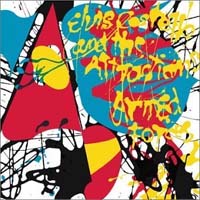
2. Elvis Costello & the Attractions, Armed Forces
Along with Bob Dylan, Burt Bacharach, and Paul Williams, Elvis Costello rounds out my father’s list of songwriters who never should have been vocalists. And despite the brilliance of his body of work—and especially this album here, the first clear gem—this criticism is hard to ignore. Yes, E.C. strikes one nasally timbre, but isn’t that part of his charm? He showed us that anyone could be a rock star. He needs to wear glasses? I wear glasses! He used to be a computer programmer? I like computers! He can’t sing? Well, Barry Manilow can sing, but I don’t want to be Barry Manilow—I want to be Elvis Costello.
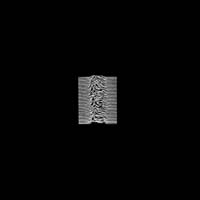
Album of the Year: Joy Division, Unknown Pleasures
Where’s the music? What’s wrong with his voice? This first time I heard this album (in the late ‘80s, when I’d heard they were they were the band that New Order had formed out of), I hated it. It was the first time I can recall hearing something to which I was so averse. The music was challenging, and I had never been so challenged before. Still, I worked at it, I listened to it, and I made my own, personal sense of it. That’s when a piece of music isn’t just an essential part of your record collection, it becomes an important part of who you are.
Listening to Unknown Pleasures here, in the context of other music from 1979, it’s striking how it doesn’t sound like what I thought Joy Division sounded like. Though the music was far different from its contemporaries, its production standards were not. Except for bloaters like The Wall, a lot of music from the period was just a little on the tinny side. Unknown Pleasures is not cold or dark, it’s filled with rich layers of sound, crisp, delicate rhythms, and Ian Curtis’s trembling bass vocals, cautiously feeling their way ahead of the music.
For anyone who has ever defined themselves through music, there is an album that was, at one point, their defining moment. Listening to it once more—since I don’t know when—I can feel it happening all over again.
